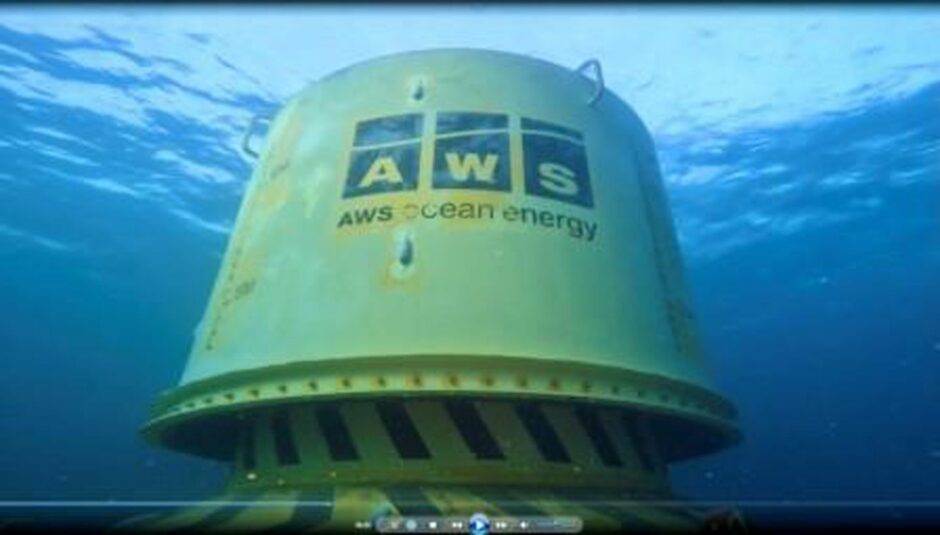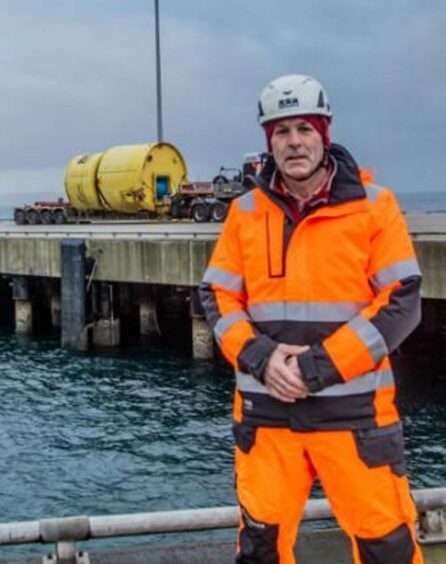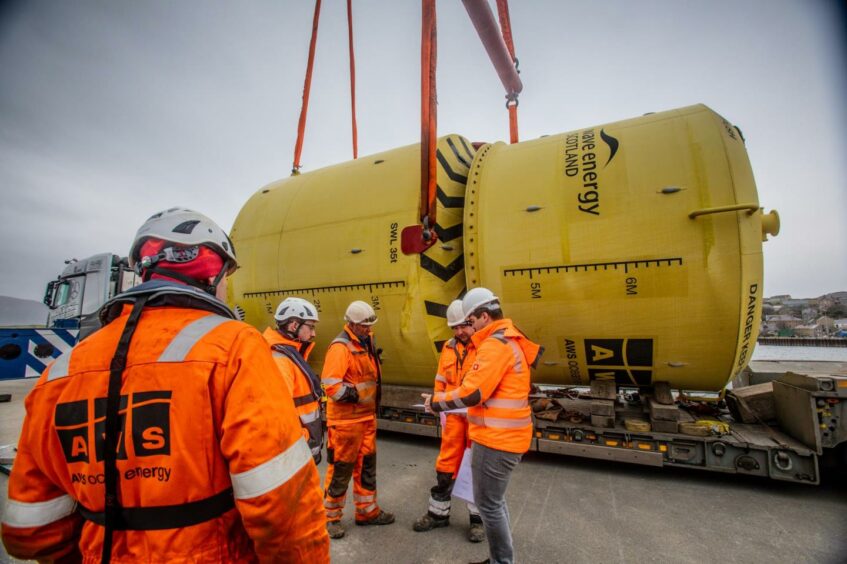
An Inverness-based wave energy firm is toasting “highly encouraging results” from a recent phase of sea trials.
AWS Ocean Energy says its confidence in Waveswing has now been “endorsed by real data” following the tests at the European Marine Energy Centre (EMEC) in Orkney.
Waveswing captured average power of over 10 kilowatts (kW) and peaks of 80kW, during a period of moderate wave conditions at the Scapa Flow site.
These figures exceeded AWS’ own predictions by 20%.
Other key findings underline the survivability potential of the subsea wave energy converter, which continued to deliver power in trying weather.
A short video clip demonstrating the unit’s ability to operate force 10 gales, showing a steel nut suspended on a string inside the device, has been released.
The testing programme also demonstrated that deployment of the Waveswing from sitting on the quayside to being installed and fully operational is possible in under 12 hours.
The current phase of sea trials is scheduled to complete by the end of 2022, and AWS is looking to re-deploy for further testing early next year.
Simon Grey, chief executive of AWS said: “These figures underline our strong belief that Waveswing is the real deal. While we have always been confident about the performance potential of the Waveswing, it is wonderful to see that confidence endorsed by real data.
“We believe this performance compares very favourably with equivalent figures for any previous wave device tested on the same site.
“We are now actively seeking discussions with commercialisation partners, other end users and anyone who is genuinely interested in developing commercial wave power.
“This includes for example sponsored testing programmes, so that partners can get to know the Waveswing and its potential up close.”
When installed, the 50 tonne, seven-metre high, four-metre diameter device is moored to a gravity-base anchor on the seabed using a single tension tether – it sits around three metres below the surface.
Waveswing, a £3.4 million prototype, generates energy by reacting to changes in pressure caused by passing waves.
Funding for the project has come from Wave Energy Scotland (WES), as part of the Novel Wave Energy Converter development programme.
The demonstration at EMEC is also supported by the Interreg North-West Europe’s Ocean DEMO project.
Mr Grey added: “The Waveswing features a single absorber design, with unique features which make it ideal for remote power applications such as powering subsea oilfield assets and oceanographic monitoring. However, for utility scale power, we are convinced the future lies in multi-absorber platforms which can achieve the scale necessary for wave power to make a significant contribution to renewable energy supplies. We expect to develop platforms hosting up to twenty 500 kW units with a potential capacity of 10 MW per platform.”
Waveswing has been supported by a strong, predominantly Scottish, team of subcontractors including 4c Engineering and Quoceant.
Sequentec, Malin Marine, and JGC Engineering have also used their expertise to drive the project forward.
Tim Hurst, managing director, WES, said: “WES is excited to see real data coming from the sea trials for the Waveswing device, and the evidence coming forward that its design features are working successfully to deliver energy generation performance above and beyond expectations.”
Neil Kermode, managing director, EMEC said: “It has been great to see the Waveswing deploy, survive and operate at our test site this year. We are looking forward to analysing the data from these trials in the coming weeks as we complete a performance assessment and help the AWS team show exactly what they have achieved with this imaginative project. “We know there are epic amounts of energy in the seas around the UK and indeed the world. It is really rewarding to see a Scottish company make such progress in harvesting this truly sustainable energy.”
Recommended for you


 © Supplied by AWS Ocean Energy
© Supplied by AWS Ocean Energy © Supplied by EMEC
© Supplied by EMEC